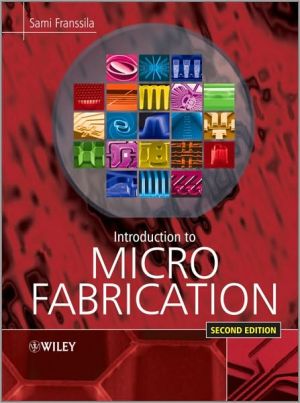Microrobotics: Methods and Applications
Search in google:
From conception to realization, Microrobotics: Methods and Applications covers all aspects of miniaturized systems that physically interact and manipulate objects at the microscale. It provides a solid understanding of this multidisciplinary field, which combines areas of materials science, mechanical engineering, and applied physics.Requiring no formal prerequisites, the book begins by introducing basic results from the strength of materials, mechanics, and applied physics. After forming this foundation, the author describes various flexure systems, actuators, and sensors as well as fabrication techniques relevant for microrobots. He then explores applications of microrobotics in medicine, materials science, and other areas. Numerous exercises encourage hands-on appreciation of the content and ancillary materials are available on a companion website.Focusing on design-oriented multidisciplinary activities, this text describes how to implement various methods for solving microrobotics problems and designing mechanical systems at the microscale. With a broad overview of the current state of the art from research and industry perspectives, the book envisions the future of microrobotics and explores its potential contributions to technology.
IntroductionWhat Is Microrobotics? The Microworld Microrobots for What?What Is the Science and Technology behind Microrobotics?PREREQUISITES Fundamental Concepts of Linear Elasticity Mechanics of Material in the Context of MicroroboticsConcept of Stress Concept of Deformation: StrainElasticity: Hooke’s LawProperties of Plane Area: Second Moment of InertiaElement of Beam Theory Torsion Yield CriteriaReferences Further Readings ExercisesFundamental Concepts of Kinematics Problem Definition Basics Tools for Kinematic AnalysisKinematics Kinetics Kinetics and Dynamics Linear and Angular MomentumEquations of Motion Lagrange FormalismIllustrative Example: The Double Pendulum Analysis of Multibody Systems Forward Kinematics (Geometrical Model) Direct Kinematics: Jacobian of a Robot Inverse KinematicsReferences Further Readings ExercisesCORE TECHNOLOGY Applied Physics for Microrobotics Scaling EffectsAn Introduction to the Physics of AdhesionMaterial Structure and Properties: Crystal and SymmetryReferences ExercisesFlexures IntroductionHistorical Perspective Mathematical Formalism: Generalized Stiffness MatrixElemental Flexures (Building Blocks): Design MethodologyElemental Flexures: Cantilever BeamNotch Hinge Cross Pivot System Based on Flexures: Design Methodology Flexure SystemsReferences Further Readings ExercisesActuators Introduction Design Principles of Actuators Electrostatic Actuators Thermal-Based ActuatorsShape Memory AlloysPiezoelectric ActuatorsActuators: Other PrinciplesReferences Further Readings ExercisesSensors Sensors in MicroroboticsSensing Technologies for Displacements Electromagnetic Sensors Optical-Based Displacement Sensors Motion Tracking with MicroscopesReferencesIMPLEMENTATION, APPLICATIONS, AND FUTURE PROSPECTS Implementation: Integration and Fabrication Aspects IntroductionAn Overview of Microfabrication PrinciplesDesign Selection CriteriaReferencesState of the Art and Future Directions in Microrobotics Introduction Applications in MedicineMicrorobotics/Nanorobotics for Materials Science Study Tools for Microassembly: Microgripper Technologies OverviewAutonomous or Semiautonomous MicrorobotsReferencesAppendix A: Illustration of Student ProjectsAppendix B: Types of Joints in MechanismAppendix C: Elementary Flexure Joints: Stiffness MatrixAppendix D: Material Properties TablesIndex








